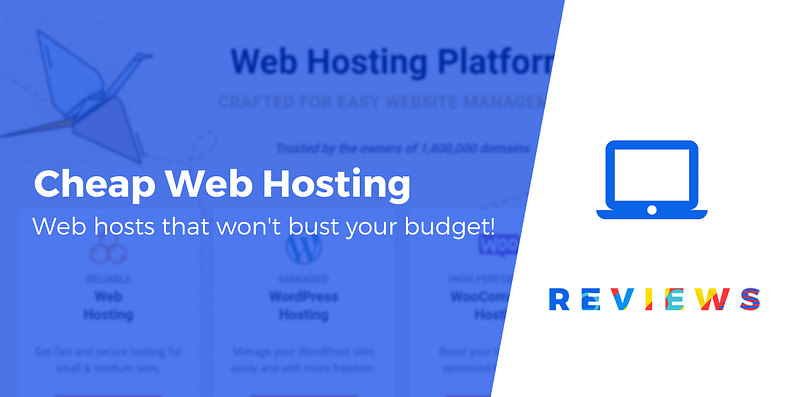Free web hosting with PHP and MySQL provides a powerful platform for building dynamic websites without upfront costs. This guide explores the advantages, disadvantages, and practical steps involved in setting up and utilizing free web hosting for your projects.
From understanding the fundamentals of PHP and MySQL to choosing the right free web hosting provider, we delve into the essential aspects of creating a successful website. We’ll guide you through configuring your hosting environment, building a basic website structure, and implementing security measures to protect your online presence.
Understanding PHP and MySQL
PHP and MySQL are two fundamental technologies used in web development. They work together to create dynamic and interactive websites. This section delves into the core concepts of these technologies and explores their relationship in building web applications.
PHP: A Server-Side Scripting Language
PHP stands for Hypertext Preprocessor. It is a widely used, open-source server-side scripting language that allows developers to create dynamic web pages.
PHP’s role in web development is to process data, generate HTML content, and interact with databases. It is executed on the server, and the resulting HTML is sent to the user’s browser.
Here are some key features of PHP:
* Dynamic Content Generation: PHP can generate dynamic content based on user input, database queries, and other factors. This allows for personalized web experiences.
* Database Connectivity: PHP seamlessly integrates with databases like MySQL, allowing for data storage, retrieval, and manipulation.
* Form Processing: PHP handles form submissions, validating data and performing actions based on user input.
* File Handling: PHP enables file operations, such as creating, reading, writing, and deleting files.
* Session Management: PHP manages user sessions, maintaining information about users across multiple page visits.
MySQL: A Relational Database Management System, Free web hosting with php and mysql
MySQL is a popular, open-source relational database management system (RDBMS) used for storing and managing data.
RDBMS organize data into tables, with each table consisting of rows (records) and columns (fields). The relationships between tables are defined using keys, ensuring data integrity and consistency.
MySQL offers several advantages for web applications:
* Data Storage and Retrieval: MySQL efficiently stores and retrieves large amounts of data, making it suitable for web applications with varying data demands.
* Data Integrity and Consistency: The relational model enforces data integrity through constraints and relationships, ensuring data accuracy and consistency.
* Query Language (SQL): MySQL uses SQL (Structured Query Language) for data manipulation and retrieval. SQL is a standard language used in most RDBMS, making it widely compatible.
* Security Features: MySQL provides security features like user authentication, access control, and data encryption to protect sensitive information.
PHP and MySQL: A Powerful Combination
PHP and MySQL are often used together to create dynamic web applications. PHP acts as the glue that connects the front-end (user interface) to the back-end (database).
PHP interacts with MySQL to perform the following tasks:
* Data Retrieval: PHP queries the MySQL database to fetch data based on user requests.
* Data Manipulation: PHP uses SQL queries to insert, update, or delete data in the MySQL database.
* Dynamic Content Generation: PHP retrieves data from MySQL and uses it to generate dynamic content for the user interface.
For example, a website that allows users to create accounts and manage their profiles would use PHP to handle user registration and login forms, store user data in a MySQL database, and dynamically display user information on their profile pages.
Finding Free Web Hosting with PHP and MySQL Support
Finding free web hosting that supports PHP and MySQL can be challenging, but it’s possible. Many providers offer free plans with limited features, but they can be a great starting point for personal projects or small websites. This section will explore some popular options and compare their features to help you make an informed decision.
Popular Free Web Hosting Providers
Here are some popular free web hosting providers that offer PHP and MySQL support:
- Freehostia: Freehostia is a well-known provider offering a free plan with 250 MB of disk space, 10 GB of bandwidth, and support for PHP and MySQL. They also offer a variety of paid plans with more resources.
- 000Webhost: 000Webhost is another popular choice, offering a free plan with 1 GB of disk space, 10 GB of bandwidth, and support for PHP and MySQL. They also have a paid plan for those needing more resources.
- InfinityFree: InfinityFree provides a free plan with unlimited disk space, unlimited bandwidth, and support for PHP and MySQL. They also offer a paid plan with more features and resources.
- ByetHost: ByetHost is another option with a free plan offering 200 MB of disk space, 2 GB of bandwidth, and support for PHP and MySQL. They also have paid plans for those needing more resources.
Comparing Free Web Hosting Providers
It’s essential to compare the features offered by different free web hosting providers to find the best fit for your needs. Here’s a table summarizing the key features, limitations, and pricing of the providers mentioned above:
| Provider Name | Features | Limitations | Pricing |
|---|---|---|---|
| Freehostia | 250 MB disk space, 10 GB bandwidth, PHP, MySQL | Limited storage and bandwidth, ads displayed on websites | Free |
| 000Webhost | 1 GB disk space, 10 GB bandwidth, PHP, MySQL | Limited storage and bandwidth, ads displayed on websites | Free |
| InfinityFree | Unlimited disk space, unlimited bandwidth, PHP, MySQL | Limited resources compared to paid plans, ads displayed on websites | Free |
| ByetHost | 200 MB disk space, 2 GB bandwidth, PHP, MySQL | Limited storage and bandwidth, ads displayed on websites | Free |
It’s crucial to note that free web hosting providers often have limitations in terms of resources, features, and performance. While they can be a good starting point for small projects, they may not be suitable for larger or more demanding websites.
Setting Up a Free Web Hosting Account
Setting up a free web hosting account is the first step towards getting your website online. This process involves selecting a hosting provider, creating an account, and configuring the necessary settings for your website.
Choosing a Free Web Hosting Provider
Choosing the right free web hosting provider is crucial. Consider factors such as:
- Storage space: The amount of storage space available for your website files.
- Bandwidth: The amount of data transfer allowed for your website.
- PHP and MySQL support: Essential for running dynamic websites.
- Customer support: The availability and responsiveness of support resources.
- Security features: Measures in place to protect your website from threats.
Creating a Free Web Hosting Account
Once you’ve chosen a provider, follow these general steps to create an account:
- Visit the provider’s website: Go to the website of your chosen provider.
- Locate the signup form: Look for a “Sign Up,” “Free Hosting,” or similar button.
- Fill out the form: Provide your email address, username, password, and other required information.
- Agree to the terms of service: Carefully read and accept the provider’s terms of service.
- Verify your email address: Check your inbox for a verification email and click the provided link.
- Access your hosting control panel: Once your account is activated, you’ll be able to access the control panel to manage your website.
Configuring PHP and MySQL Settings
Most free web hosting providers offer pre-configured PHP and MySQL environments. However, you might need to adjust certain settings depending on your website’s requirements. Here are some common configurations:
- PHP version: Ensure that the PHP version supported by your website is available. You can usually select the desired version from the hosting control panel.
- MySQL database creation: You’ll need to create a MySQL database to store your website’s data. This is usually done through the hosting control panel’s database management tools.
- Database user and password: Create a database user with appropriate permissions and set a strong password.
Uploading Website Files to the Hosting Server
After configuring the necessary settings, you can upload your website files to the hosting server. This is typically done using an FTP client, which allows you to transfer files between your computer and the server.
- Download and install an FTP client: Popular options include FileZilla, Cyberduck, and WinSCP.
- Connect to the server: Enter the server’s address, your username, and password in the FTP client.
- Navigate to the website’s directory: Locate the directory where your website files should be uploaded (usually “public_html” or “www”).
- Upload your website files: Drag and drop your files from your computer to the server’s directory.
Limitations of Free Web Hosting
Free web hosting, while attractive for its cost-effectiveness, comes with inherent limitations that can impact website performance and functionality. These limitations primarily stem from the need for providers to manage costs and resources effectively, often leading to restrictions on storage space, bandwidth, and features.
Storage Space
Free web hosting plans typically offer limited storage space, which can restrict website size and functionality. This can be particularly problematic for websites with large files, such as images, videos, or databases.
- The limited storage space can force website owners to carefully manage file sizes and consider using optimized images or videos.
- This can also limit the number of pages or features that can be hosted on the website, potentially impacting user experience and functionality.
Bandwidth
Bandwidth refers to the amount of data that can be transferred between a website and its visitors. Free web hosting plans often have limited bandwidth, which can lead to slow loading times, especially during peak traffic hours.
- Limited bandwidth can affect website performance, particularly for websites with high traffic volume or large files.
- It can also result in website downtime or errors if the allocated bandwidth is exceeded, negatively impacting user experience and potentially leading to lost visitors.
Features
Free web hosting plans often come with limited features compared to paid plans. These limitations can include:
- Absence of advanced features like email accounts, databases, or scripting languages, which are crucial for website functionality.
- Limited support for custom domains, hindering website branding and professionalism.
- Restricted access to security features, making websites more vulnerable to attacks.
Impact on Website Performance and Functionality
The limitations of free web hosting can significantly impact website performance and functionality.
- Limited storage space can lead to slow loading times, particularly for websites with large files or complex features.
- Restricted bandwidth can result in website downtime or errors during peak traffic hours, affecting user experience and potentially impacting .
- The absence of essential features like databases or scripting languages can hinder website functionality and limit its capabilities.
Overcoming Limitations with Paid Hosting
To overcome the limitations of free web hosting, upgrading to a paid plan is often the most effective solution. Paid hosting plans offer:
- More storage space, allowing for larger websites with more content and features.
- Higher bandwidth, ensuring faster loading times and improved user experience, even during peak traffic hours.
- A wider range of features, including advanced security options, email accounts, and support for custom domains, enhancing website functionality and professionalism.
Resources and Tutorials: Free Web Hosting With Php And Mysql

Learning PHP, MySQL, and web development can be a rewarding journey. This section provides valuable resources and tutorials to help you get started and advance your skills. It also highlights online communities and forums where you can seek assistance and connect with other developers.
Online Learning Platforms
Online learning platforms offer structured courses, interactive exercises, and projects to guide you through the learning process. These platforms cater to various learning styles and skill levels, from beginners to advanced developers.
- Codecademy: Offers interactive tutorials and projects for beginners to learn HTML, CSS, JavaScript, PHP, and MySQL. https://www.codecademy.com/
- freeCodeCamp: Provides comprehensive courses and certifications in web development, including front-end, back-end, and data science. https://www.freecodecamp.org/
- Khan Academy: Offers free courses on computer programming, including HTML, CSS, JavaScript, and SQL. https://www.khanacademy.org/computing/computer-programming
- Udemy: Provides a wide range of courses on PHP, MySQL, and web development, with options for both free and paid courses. https://www.udemy.com/
- Coursera: Offers online courses and certifications from top universities and institutions, including courses on PHP, MySQL, and web development. https://www.coursera.org/
Documentation and Reference Materials
Official documentation and reference materials provide detailed information on PHP, MySQL, and web development concepts, syntax, functions, and libraries. These resources are essential for understanding the language’s nuances and best practices.
- PHP Manual: The official documentation for PHP, covering all aspects of the language, including functions, classes, and extensions. https://www.php.net/manual/en/
- MySQL Documentation: The official documentation for MySQL, providing information on database management, SQL syntax, and administration. https://dev.mysql.com/doc/
- W3Schools: A comprehensive resource for web development tutorials and reference materials, covering HTML, CSS, JavaScript, PHP, and more. https://www.w3schools.com/
Online Communities and Forums
Online communities and forums offer a platform to connect with other developers, ask questions, share knowledge, and get help with coding challenges. These platforms provide a supportive environment for learning and growth.
- Stack Overflow: A question-and-answer website for programmers, with a vast collection of questions and answers related to PHP, MySQL, and web development. https://stackoverflow.com/
- PHP.net Forums: The official forums for PHP, where users can discuss various aspects of the language, share code snippets, and seek assistance. https://www.php.net/forums.php
- MySQL Forums: Forums dedicated to MySQL, where users can discuss database management, SQL queries, and troubleshooting. https://forums.mysql.com/
- Reddit (r/PHP, r/MySQL): Subreddits dedicated to PHP and MySQL, where users can share news, discuss topics, and ask questions. https://www.reddit.com/r/PHP, https://www.reddit.com/r/MySQL
Books and Tutorials
Books and tutorials offer a structured approach to learning PHP, MySQL, and web development. These resources provide in-depth explanations, practical examples, and exercises to solidify your understanding.
- “PHP & MySQL Web Development” by Luke Welling and Laura Thomson: A comprehensive guide to building dynamic websites using PHP and MySQL. https://www.amazon.com/PHP-MySQL-Web-Development-Complete/dp/1449367521
- “Head First PHP & MySQL” by Lynn Beighley and Michael Morrison: A visually engaging and interactive approach to learning PHP and MySQL. https://www.amazon.com/Head-First-PHP-MySQL-Brain-Friendly/dp/0596006315
- “Learning PHP, MySQL & JavaScript” by Robin Nixon: A beginner-friendly guide to learning PHP, MySQL, and JavaScript for web development. https://www.amazon.com/Learning-PHP-MySQL-JavaScript-Develop/dp/1119135554
Open-Source Projects
Contributing to open-source projects is an excellent way to learn from experienced developers, gain practical experience, and build your portfolio.
- WordPress: A popular content management system (CMS) built with PHP and MySQL. https://wordpress.org/
- Drupal: Another popular CMS built with PHP and MySQL. https://www.drupal.org/
- Laravel: A popular PHP framework for building web applications. https://laravel.com/
- Symfony: A mature PHP framework for building web applications. https://symfony.com/
Concluding Remarks
While free web hosting offers a fantastic starting point for web development, it’s important to understand its limitations and consider upgrading to paid plans as your website grows. This guide has equipped you with the knowledge and resources to make informed decisions about your web hosting journey, empowering you to build and manage your own websites effectively.




